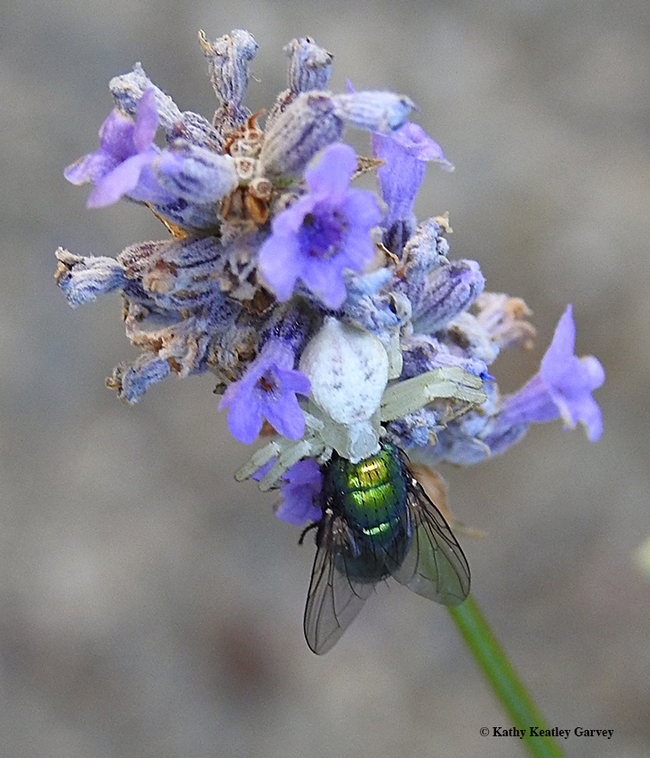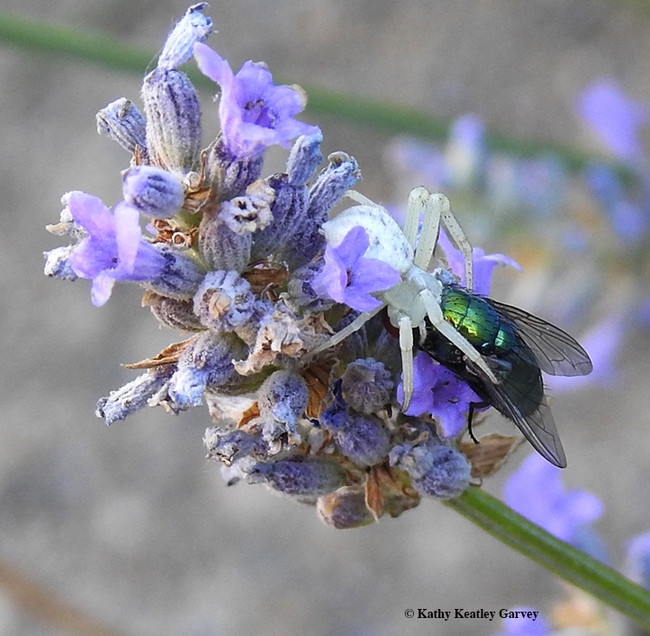What's for dinner?
A crab spider, camouflaged in our lavender patch, didn't catch a honey bee, a butterfly, an ant or a syrphid fly.
No, it nailed a green bottle fly.
We couldn't help but notice. The fly's metallic blue-green coloring stood in sharp contrast to the white spider.
One venomous bite to kill it. And soon the fly, Lucilia sericata, was toast. Milk toast.
Crab spiders don't build webs to trap their prey. They're cunning and agile hunters that spring into action when an unsuspecting prey appears on the scene. They belong to the family Thomisidae, which includes some 175 genera and more than 2100 species. And they're ancient: spiders date back 400 million years ago.
Do you like spiders? You should.
“Spiders are an incredibly diverse group with more than 50,000 species described with probably another 200,000 remaining to yet be discovered,” says spider expert Jason Bond, the Evert and Marion Schlinger Endowed Chair in Insect Systematics in the UC Davis Department of Entomology and Nematology.
It's worth repeating what Professor Bond said about spiders at the Bohart Museum of Entomology open house, “Eight-Legged Wonders,” on Saturday, March 9.
The five good reasons to like spiders:
- Spiders consume 400-800 million tons of prey, mostly insects, each year. Humans consume somewhere around 400 million tons of meat and fish each year.
- Spider silk is one of the strongest naturally occurring materials. Spider silk is stronger than steel, stronger and more stretchy than Kevlar; a pencil thick strand of spider silk could be used to stop a Boeing 747 in flight.
- Some spiders are incredibly fast – able to run up to 70 body lengths per second (10X faster than Usain Bolt).
- Athough nearly all 47,000-plus spider species have venom used to kill their insect prey, very few actually have venom that is harmful to humans.
- Some spiders are really good parents –wolf spider moms carry their young on their backs until they are ready to strike out on their own; female trapdoor spiders keep their broods safe inside their burrows often longer than one year, and some female jumping spiders even nurse their spiderlings with a protein rich substance comparable to milk.
Attached Images:

